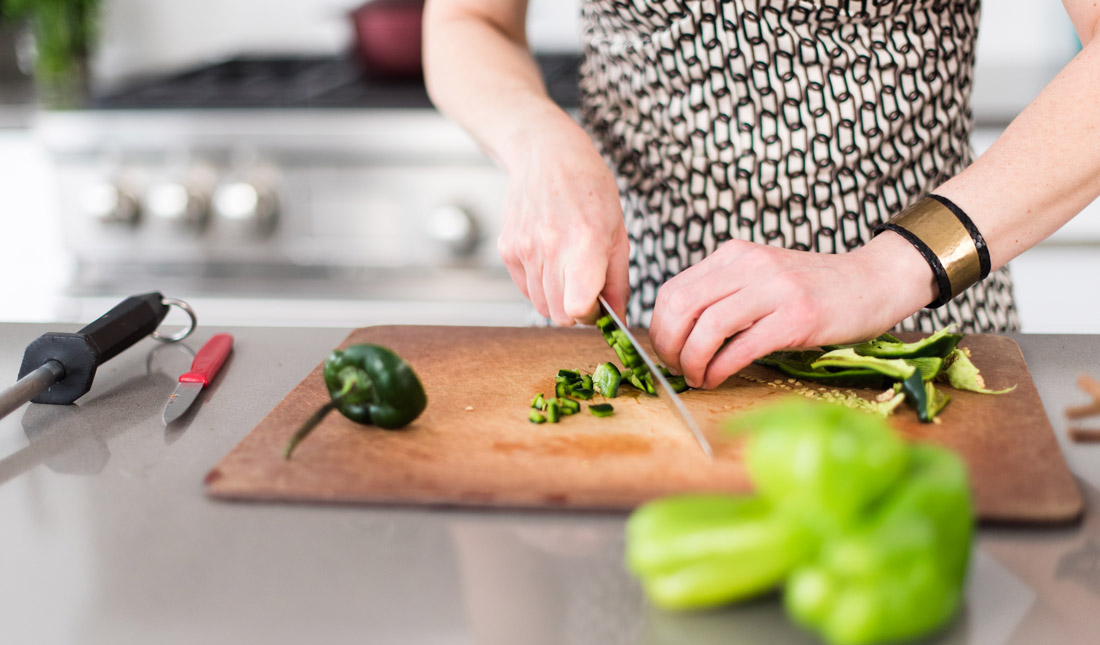If you are reading this page, you are probably considering making beef brodo at home. Congratulations! Your cooking will never be the same! When I worked in restaurant kitchens, I used to prepare stocks and brodos that would simmer for 10 to 12 hours or overnight. In my home kitchen, it’s pretty hard to deal with this large number of bones, so I work with smaller batches and simmer for 1-2 hours. That’s enough to yield an incredible broth. I use it for everything, and it’s so good that it doesn’t last long.
Watch this quick video of Beef Brodo in the works.
Broth or Brodo? Brodo or Broth? What about stock? What’s the difference between them?
Good question. Brodo is more of a drinkable “tea,” and broth is the term used for cooking purposes. Broth and stock are two terms for the same thing. Brodo is seasoned; the broth is unseasoned for stews, sauces, soups, and many purposes.
Can you use brodo for cooking purposes instead of broth? Of course, you can; just be sure to taste the recipe as you cook and adjust the seasoning accordingly. You might need to go lightly on the seasoning if you use brodo.
What about consistency? Do they have the same texture?
It depends on who is making it. I like to give brodo a bit more body than broth, simply because the broth will probably be reduced in cooking recipes. In contrast, the brodo is the final product.
Brodo is considered one of the healthiest foods you can eat/drink. It helps your body function better, improves digestion, strengthens joints and helps the body absorb protein. Speaking of protein, brodo is loaded, about 10 grams per cup of beef brodo.
Brodo is a fantastic meal replacement. It is very satisfying and will give you a sensation of a full meal. I have documented my own brodo drinking experiences. Whenever I drink brodo for dinner, I notice that it fills me up. Maybe that’s just me. I’d love to hear your experiences when drinking brodo.
About the bones: You can start with raw bones and roast them. I like to make many short ribs stews during the wintertime, so if I have leftover bones, I’ll save them for brodo. That was the case when I made this video. You can see in the video that the bones are from short ribs and not raw beef bones. Can you use veal bones instead of beef? Absolutely! Use this same recipe and proceed to make veal brodo. This brodo will keep in the freezer for up to 6 months and it’s one of the easiest frozen dinners you can make.
One last note about Beef brodo, I’m not against recipes (obviously), but some things in the cooking world really don’t need them. Brodo (or broth or stock) is one of them. The recipe below is just a guidance, feel free to go with your instincts. Get in touch if you have any questions. Happy to help, always and forever!
Beef Brodo
Makes about 3 quarts
6 pounds beef bones
3 carrots, peeled and cut into chunks
2 onions, peeled and quartered
2 stalks celery
5 cloves garlic, peeled
2 tablespoons olive oil
1 tablespoon black peppercorns, cracked
3 to 4 bay leaves
Kosher salt and freshly ground pepper
- Pre-heat the oven to 375˚F. Place a large roasting pan in the oven. Place the beef bones in the roasting pan with the vegetables. Try not to overcrowd the pan so they have lots of space to brown evenly. Drizzle the olive oil and toss well. Roast until they are medium brown all over, about 30 minutes,
- Transfer the bones to a large stockpot (about 10 to 15 quarts) with the vegetables and cover them with about 4 to 6 quarts of cold water. The water should be 1 to 2 inches above the bone level. Cover the pan and cook over high heat just to bring to a boil, about 15 minutes. Uncover, reduce the heat to low, and cook at a very gentle simmer, skimming occasionally for fat and foam. Do not try to rush the process by raising the heat and boiling. You want very small bubbles at the most. The longer you cook your stock, the more viscosity and complexity it will have.
- When the bones have cooked for about 30 minutes hours, add the peppercorns and bay leaves. Continue to simmer the stock for another hour, skimming occasionally.
- After about 2 hours, the stock should be very gelatinous and medium to dark brown. Remove the big bones from the stockpot with a slotted spoon and strain the stock through a fine mesh strainer. This moment is gold! Discard the bones and vegetables.
- Place the brodo over an ice bath then chill in the refrigerator for 12 to 24 hours – chilled is the best way to judge the quality of the stock. The more gelatinous, the better. Carefully remove any fat that accumulates on the top and discard it. Divide the stock into several small plastic containers, label them, and store in the refrigerator for up to 3 days or in the freezer for up to 6 months.
I’m so happy that you visited today. Thanks for reading and browsing my site.
Make sure to share this story with someone who cares about this topic.
I’d love to know what you think about this article. Please send an e-mail.
You can buy my cookbooks on Amazon: Latin Superfoods is my latest cookbook, I’m also the author of The Brazilian Kitchen and My Rio de Janeiro: A cookbook.
Visit my YouTube Chanel @LeticiaMoreinosSchwartz
The easiest and most impactful thing you can to support is subscribe to my newsletter and to my channel on YouTube. And of course, tell your friends about it.
I’d love to connect with you on social media
Instagram @LeticiaMoreinosSchwartz,
Twitter @ ChefLeticia
Facebook @ChefLeticiaHealthyCooking
Linked In @LeticiaMoreinosSchwartz
See you next time,
Leticia
















